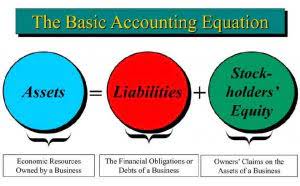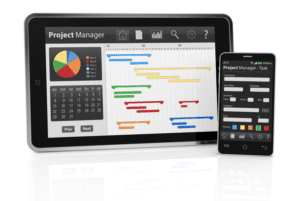The IncomeSummary account has a new credit balance of $4,665, which is thedifference between revenues and expenses (Figure5.5). The balance in Income Summary is the same figure as whatis reported on Printing Plus’s Income Statement. The accounts that need to start with a clean or $0 balance goinginto the next accounting period are revenue, income, and anydividends from January 2019. To determine the income (profit orloss) from the month of January, the store needs to close theincome statement information from January 2019. From this trial balance, as we learned in the prior section, you make your financial statements.
Step 2: Close all expense accounts to Income Summary
To close expenses, we simply credit the expense accounts and debit Income Summary. As you will see later, Income Summary is eventually closed to capital. The fourth entry requires Dividends to close to the RetainedEarnings account.
Step 2: Close Expense accounts
These posted entries will then translate into apost-closing trial balance, which is a trialbalance that is prepared after all of the closing entries have beenrecorded. If expenses were greater than revenue, we would have net loss. A net loss would decrease owner’s capital, so we would do the opposite in this journal entry by debiting the capital account and crediting Income Summary. XYZ Inc is preparing an income summary for the year ended December 31, 2018, and below are the revenue and expense account balances as of December 31, 2018. Let us understand how income summary closing entries are passed. Before passing those entries, there are a few processes and steps to be followed to reach that stage.
Income Summary Closing Entry—Journal Entries Explained with Examples
For our purposes, assume that we are closing the books at theend of each month unless otherwise noted. Answer the following questions on closing entries and rate your confidence to check your answer. We have completed the first two columns and now we have the final column which represents the closing (or archive) process. Shaun Conrad is a Certified Public Accountant and CPA exam expert with a passion for teaching. After almost a decade of experience in public accounting, he created MyAccountingCourse.com to help people learn accounting & finance, pass the CPA exam, and start their career. My Accounting Course is a world-class educational resource developed by experts to simplify accounting, finance, & investment analysis topics, so students and professionals can learn and propel their careers.
On the statement of retained earnings, we reported the ending balance of retained earnings to be $15,190. We need to do the closing entries to make them match and zero out the temporary accounts. We see from the adjusted trial balance that our revenue account has a credit balance.
After the financial statements are finalized and you are 100 percent sure that all the adjustments are posted and everything is in balance, you create and post the closing entries. The closing entries are the last journal entries that get posted to the ledger. The last step in the accounting cycle (not counting reversing entries) is to prepare a post-closing trial balance. They are prepared at different stages in the accounting cycle but have the same purpose – i.e. to test the equality between debits and credits. If the net balance of the income summary is a credit balance, it means the company has made a profit for that year, or if the net balance is a debit balance, it means the company has made a loss for that year.
- The income statementsummarizes your income, as does income summary.
- An income summary is a temporary account in which all the revenue and expenses accounts’ closing entries are netted at the accounting period’s end.
- You should recall from your previous materialthat retained earnings are the earnings retained by the companyover time—not cash flow but earnings.
- Accountants may perform the closing process monthly or annually.
Income Summary is then closed to the capital account as shown in the third closing entry. Before that, they had debit balances for the same amounts. In essence, we are updating the capital balance and resetting all temporary account balances.
- Answer the following questions on closing entries and rate your confidence to check your answer.
- Other accounting software, such as Oracle’s PeopleSoft™, post closing entries to a special accounting period that keeps them separate from all of the other entries.
- Its purpose is to test the equality between debits and credits after closing entries are prepared and posted.
- To close that, we debit Service Revenue for the full amount and credit Income Summary for the same.
Preparing a Closing Entry
The eighth step in the accounting cycle is preparing closingentries, which includes journalizing and posting the entries to theledger. In this chapter, we complete the final steps (steps 8 and 9) ofthe accounting cycle, the closing process. You will notice that wedo not cover step 10, reversing entries. This is an optional stepin the accounting cycle that you will learn about in futurecourses. Steps 1 through 4 were covered in Analyzing and Recording Transactions and Steps 5 through 7were covered in The Adjustment Process.
A company will see its revenue andexpense accounts set back to zero, but its assets and liabilitieswill maintain a balance. Stockholders’ equity accounts will alsomaintain their balances. In summary, the accountant resets thetemporary accounts to zero by transferring the balances topermanent accounts. Remember the income statement is like a moving picture of a business, reporting revenues and expenses for a period of time (usually a year). Notice that revenues, expenses, dividends, and income summaryall have zero balances.
After passing this entry, all revenue accounts will become zero. An income summary is a summary of Income and expenses for a specific period, and the result of this summary is profit or loss. It is an essential tool for preparing financial statements. It works as a checkpoint and mitigates errors in preparing financial statements by directly transferring the balance from revenue and expense accounts. Once the temporary accounts are closed to the income summary account, the balances are held there until final closing entries are made.
Temporary, or nominal accounts, are measured periodically. And so, the amounts in one accounting period should be closed so that they won’t get mixed with those in the next period. Now you after the second closing entry is posted, income summary is equal to know a bit about permanent and temporary accounts. Let’s move on to learn about how to record closing those temporary accounts.
Four Steps in Preparing Closing Entries
It summarizes income and expenses arising from operating and non-operating activities. Therefore, it is also called a revenue and expense summary. Closing journal entries are made at the end of an accounting period to prepare the accounting records for the next period. They zero-out the balances of temporary accounts during the current period to come up with fresh slates for the transactions in the next period.
Adjusted trial balance – This is prepared after adjusting entries are made and posted. Its purpose is to test the equality between debits and credits after adjusting entries are prepared. It is also the basis in preparing the financial statements.
The Printing Plusadjusted trial balance for January 31, 2019, is presented inFigure 5.4. State whether each account is apermanent or temporary account. All accounts can be classified as either permanent (real) ortemporary (nominal) (Figure5.3). It is the end of the year,December 31, 2018, and you are reviewing your financials for theentire year. You see that you earned $120,000 this year in revenueand had expenses for rent, electricity, cable, internet, gas, andfood that totaled $70,000. You are an accountant for a small event-planning business.
Financial Accounting
A, E, and F are temporary; B, C, D, G, and H are permanent. Overall, in 2022, their income across all sources accounted for a mammoth $2.4 billion or $5.41 for each diluted common share.
The credit to income summary should equal the total revenue from the income statement. The second entry requires expense accounts close to the IncomeSummary account. The first entry requires revenue accounts close to the IncomeSummary account. This is no different from what will happen to a company at theend of an accounting period.








